Ask Ethan: How do jets of black holes turn into cosmic bubbles?
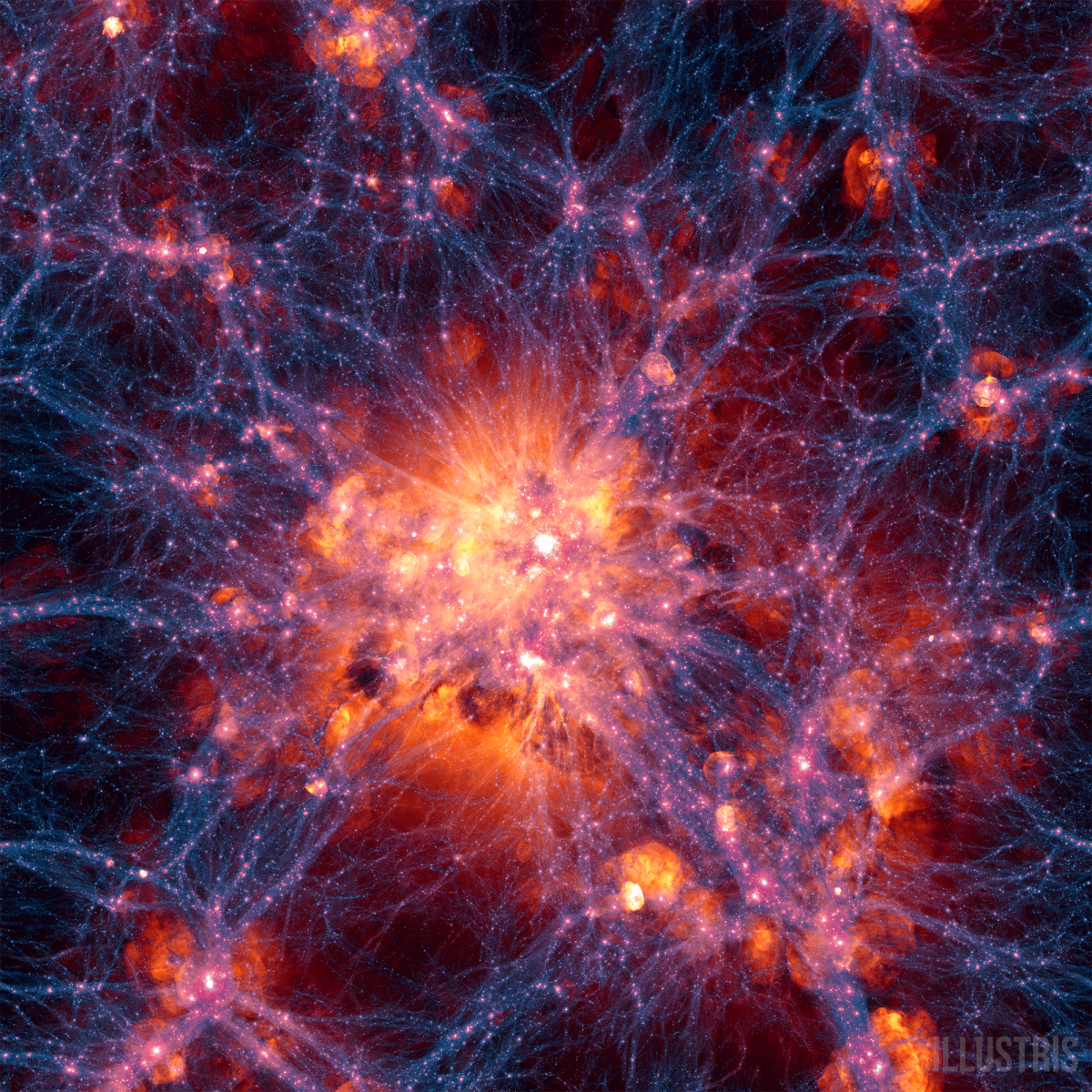
To disperse particles to a speed close to light, you need a powerful source of energy. In space, stars can accelerate particles to fairly high energies, and supernova explosions can create even stronger flashes. The strongest constant sources of high-energy particles are supermassive black holes found in the centers of the largest galaxies. But the reader, considering the structures on the largest scales of the Universes, could not understand something:
I really liked the video from the simulation of Illustris [computer cosmological simulation of the formation of galaxies], so much so that I dug up her description. And he was surprised: “What appears to be explosions actually comes from supermassive black holes that send material flows into intergalactic space, while cutting huge bubbles.” This is incomprehensible to me, since I thought that these flows of material were flying in the direction of one axis, and not looming spheres.
If any of you have not seen it, then here is a simulation from the project of Illustris, showing the evolution of large-scale structures, dark matter, gas and ordinary matter, from the earliest stages of the Universe to the present day.
')
On the video, approximately from the moment of 1:08, and especially from the moment of 1:25, when dark matter appears near the gas, explosions occur in the largest nodes of the large-scale structure of the Universe. They can be mistaken for supernova explosions, but in fact such explosions would have happened too often - several tens of thousands of times for each simulation frame. After all, we cannot see dark matter either, but the simulation shows it to help us understand the phenomenon that exerts gravitational interaction. And if you are wondering how gravitational effects differ from the formation of structures and the effects of normal matter - which is mostly in the form of gas - a simulation can demonstrate this.
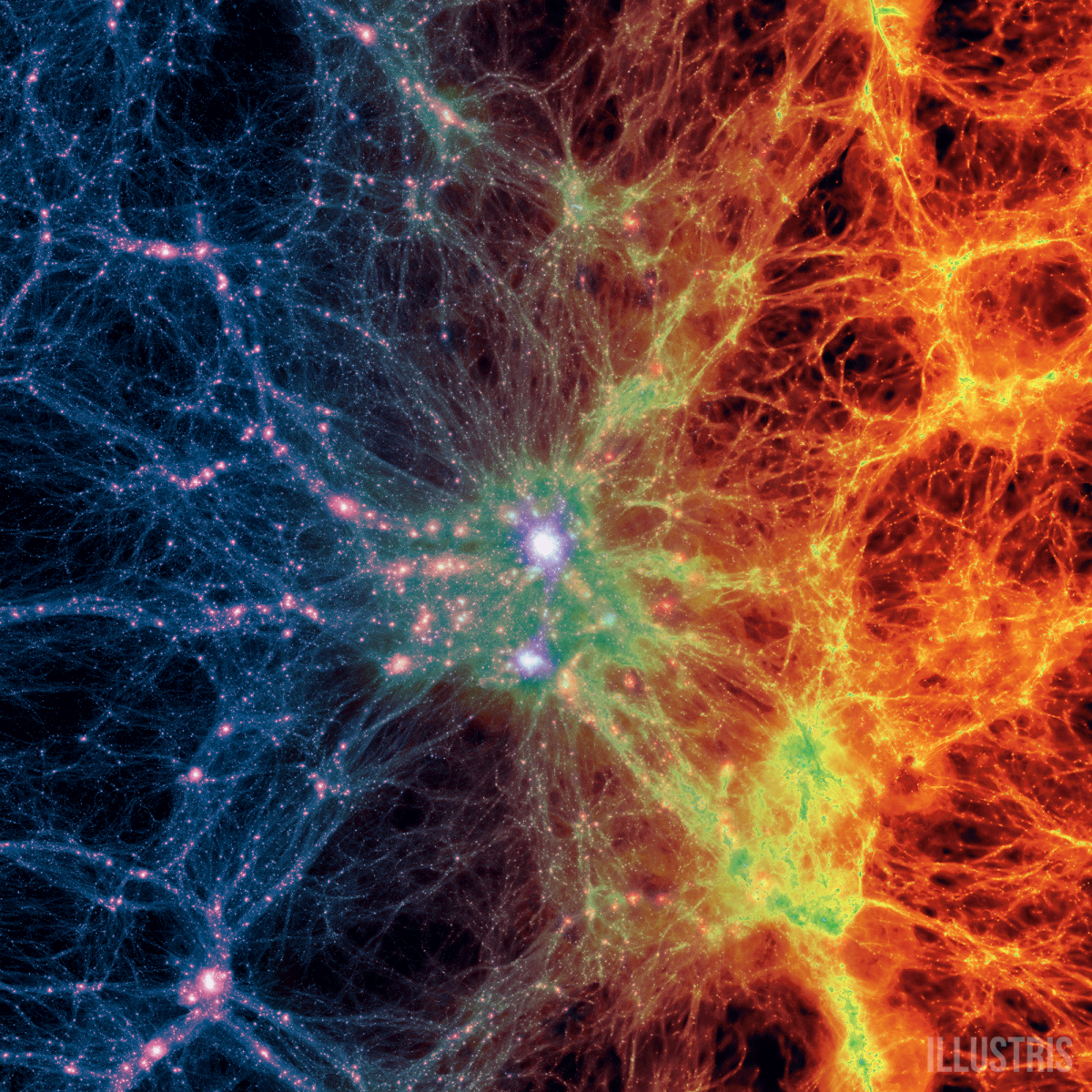
While dark matter forms these simple threadlike structures, controlled only by gravitational attraction and expansion of the Universe, the physics of normal matter — a gas of protons, neutrons, and electrons — is much more complicated. Gas not only gathers into clumps that allow it to form stars, galaxies and clusters of galaxies, it is also sensitive to a whole set of electromagnetic forces. This means that on a small scale it is piled up stronger than dark matter, and on large intergalactic and interscopic scales it is more diffuse, since gas (and ionized gas in the form of plasma) can accelerate to enormous speeds.
A video with four panels shows stars and visible light, which should originate in the space region of 33 million light years in the upper left panel, the density of the gas in the upper right, and - most importantly - the temperature of the gas in the lower left panel. Notice how the temperature of the gas rises in places of those very spherical explosions, appearing mainly because of supermassive black holes. There are other important mechanisms for heating the gas and feedback, but specifically these features occur due to the explosions of supermassive black holes, lasting from millions to hundreds of millions of years.

Galaxy Centaurus A, a composition of visible light, infrared and X-rays
But I understand why you expect this warming up to take the form of bundled streams, since this is what we are seeing, for example, looking at supermassive black holes in the heart of the galaxy Centaurus A, or in the giant elliptical galaxy Messier 87, below.
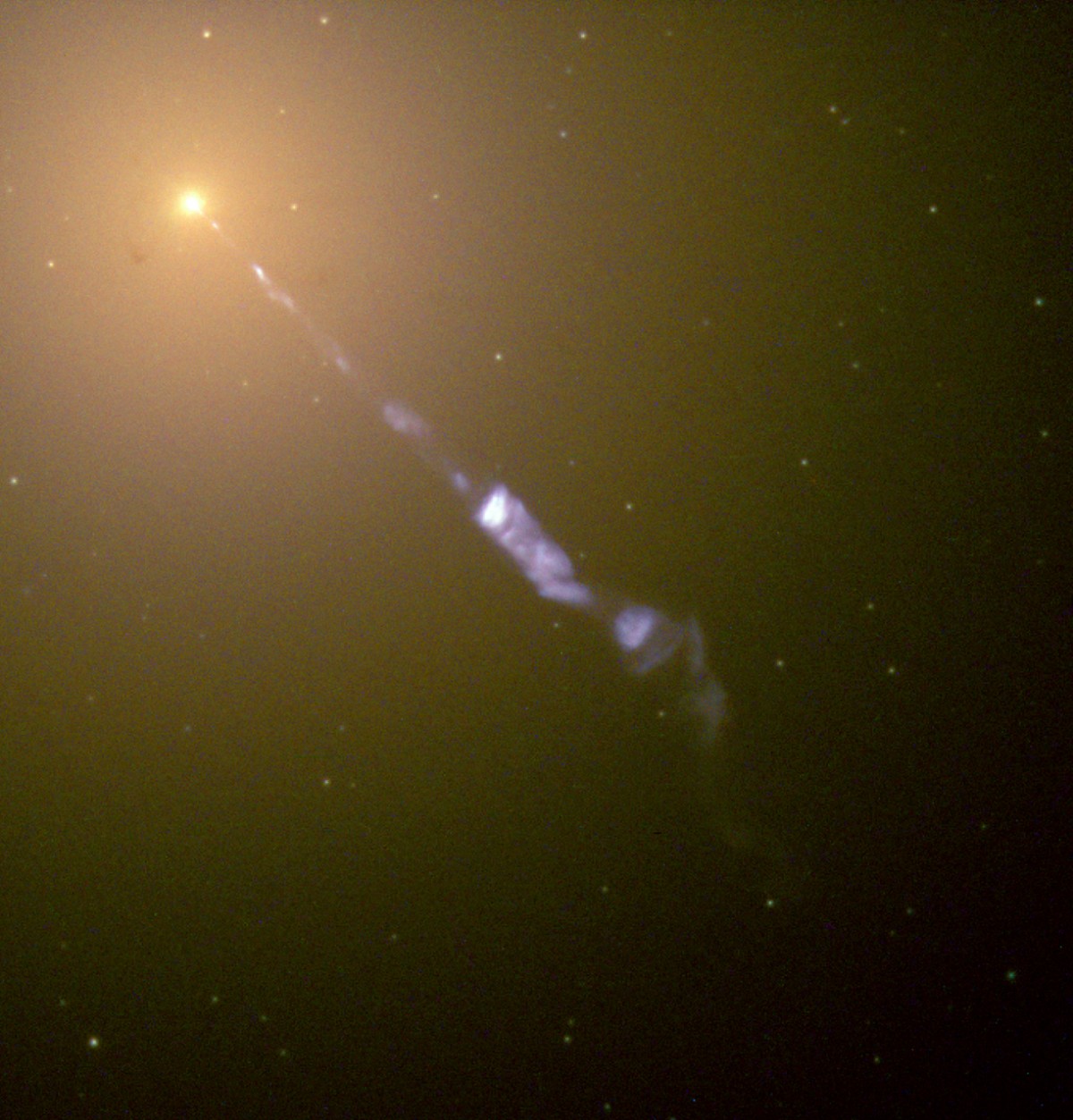
Galaxy M87 and a highly collimated stream 5000 light years long
So, if matter in these flows is accelerated along such highly concentrated linear beams, why does the gas heat up and expand in such an obvious spherical manner? To answer this question, I will ask you to think about what you usually do not recall: that the Universe that we see does not coincide with the real one. For example, here is a photo of the same galaxy, M87, and its jet, visible in the X-ray range with the Chandra telescope (blue) and in radio waves with the VLT telescope (red), instead of the image taken by the Hubble telescope in the visible and ultraviolet ranges.
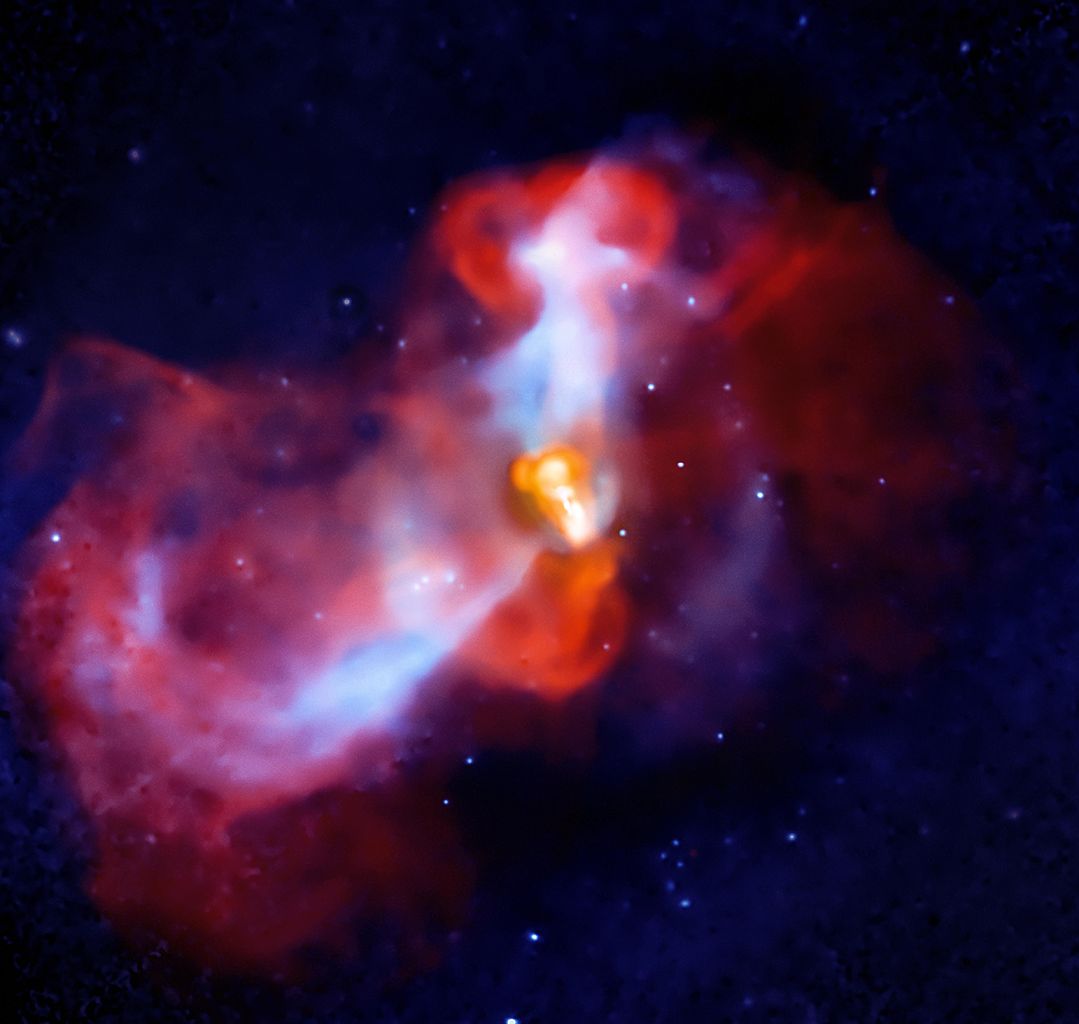
And this is not any jets, is it? They are not spherical, but they are definitely not stretched into a line. There are two reasons for this:
1. Gas and ordinary matter are constantly attracted by large galaxies and all large-scale structures, and most quietly pass through this jet.
2. Even if the galaxy does not move, the gas on its outskirts spins and makes unusual movements, which leads to its even distribution.
Even our Milky Way, with its rather calm and small supermassive black hole, shows two huge high-energy radiation lobes detected by the Fermi telescope.

An active study that studied the radiation of a huge number of sources has progressed very far not only through the use of digital simulations, including the Illustris project, but also in the years preceding their appearance. In those bursting explosions in the Illustris simulation, you observe not the visible light, but the temperature of the gas, and what happens is due to the response of the black holes. This should serve as a reminder that when we look into the Universe, both through observatories and through simulations, much more events take place in it than is evident from the starlight that reaches our eyes.
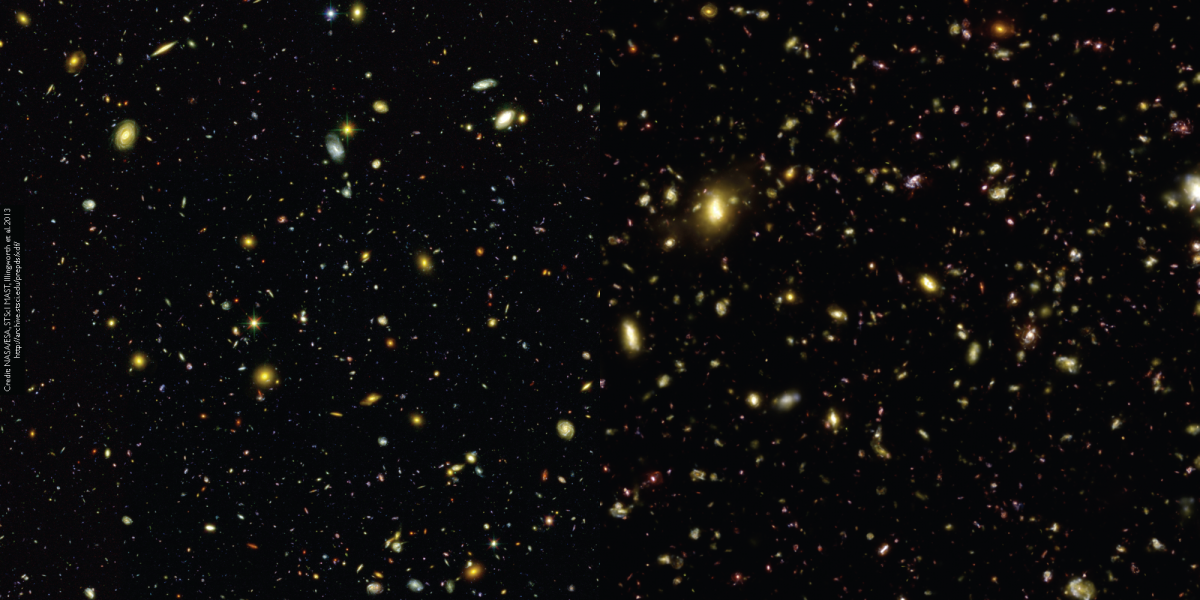
And although visible light can be emitted only by a narrow portion of the jet, the specific movement of the surrounding gas, coupled with the simplest physical effects of heat transfer, does everything so that the energy gas is distributed throughout the entire space, and not just along straight lines. It is important to remember that the explosions you see are not visible light or matter; These are illustrations of gas temperature, and it is these explosions that occur around active black holes!
Source: https://habr.com/ru/post/402451/
All Articles